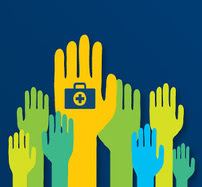

HHS Launches Youth Video Contest on Health Preparedness
Calling all young, creative producers: HHS has launched the My Preparedness Story: Staying Healthy and Resilient video challenge. The challenge invites young people between the ages of 14 and 23 to submit a short video that answers the question, “How are you helping your family, friends and community protect their health during disasters and every day?” Learn More >>

Join PHE.gov on LinkedIn
Preparing for disasters and emergencies takes a lot of great ideas from many different professional backgrounds. Follow our new page on LinkedIn, where we will talk about what you can do to keep the people who rely on you healthy during disasters and every day. Learn More >>
|

Cleaning up from flooding? Be safe!
Heavy rains brought flooding to many areas this week - and more rain or snow may be coming your way. If you are cleaning up from storms, be sure to stay safe. Be sure that you're taking the steps you need to clean up mold, remove flood waters, and stay healthy. Find out what you can do to safely clean up after a flood. Learn More >>
|

Talking to your kids about flooding
If flooding has struck your family's home, your kids may have a hard time coping. Encourage your children to talk to their parents, teachers, coaches and friends about their feelings. There are some things that kids can do to help themselves feel better, like drawing a picture about the flood, getting healthy food and exercise, or doing something that they enjoy. Learn More >>
|

From the ASPR Blog: New tool to help healthcare facilities care for pediatric patients
Children comprise more than a quarter of the U.S. population and account for a fifth of all hospital emergency department visits. Yet in 2013 when the National Pediatric Readiness Project assessed U.S. emergency departments, less than half reported having written disaster plans addressing the specific needs of children. Learn how your healthcare facility can better prepare to help children when they need it most. Learn More >>


































No hay comentarios:
Publicar un comentario